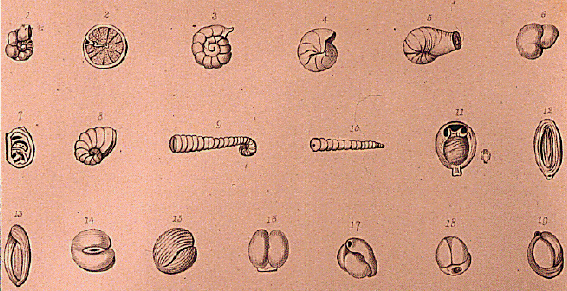



Foraminifera: Fossil Record






The oldest fossil foraminifera, from the Cambrian, are simple agglutinated tubes. Calcareous microgranular and porcellaneous tests evolved in the Carboniferous, and calcareous hyaline tests in the Permian. Over time, each of these groups has evolved many different forms, including large complex tests associated with reefs. These groups of large species became abundant when reef environments were widespread, then suffered major extinction when world climate changed and reefs were decimated. The fusulinids were one such group. They had rice-grain shaped tests and evolved into numerous widespread species during the Permian but went extinct at the end of that period when a worldwide mass extinction also eliminated most other reef dwelling organisms.
The small size of most foraminifera may make them difficult to see, but it makes them much more useful than larger fossils for applications such as petroleum exploration, because there can be thousands of specimens in the small chips of rock collected when drilling a well. In addition, many species of foraminifera are geologically short-lived, and others are only found in specific environments, so a paleontologist can examine the specimens in a sample and determine the geologic age and environment when the rock formed. As a result, since the 1920's the oil industry has been a major employer of paleontologists who specialize in these microscopic fossils. It is unusual to drill an oil well without a paleontologist onsite to determine when the desired oil-bearing rock layer has been reached.


